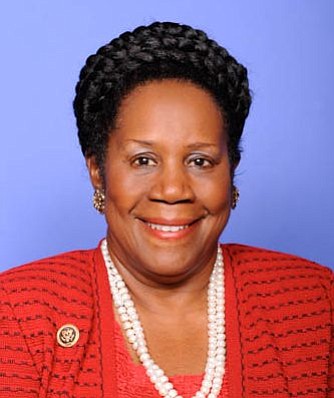Congresswoman Sheila Jackson Lee Commends Mayor Sylvester Turner on the Introduction of the Houston Peace Plan for Youth
Style Magazine Newswire | 4/8/2019, 4:03 p.m.
WASHINGTON, DC – Congresswoman Sheila Jackson Lee, a senior member of the House Judiciary Committee, and a Vice Chair of the Congressional Gun Violence Prevention Task Force, the Founder and Co-Chair of the Congressional Children’s Caucus and the author of major juvenile justice reform legislation, released this statement on the announcement of the Houston Peace Plan, addressing Youth Violence:
“I commend and congratulate Mayor Sylvester Turner on the announcement of the Houston Peace Plan, an initiative to address youth violence. His initiative is a compelling endeavor that protects against violence, promotes good health for youth and provides opportunities for youth. According to the Bureau of Justice Statistics, a recent two-year period saw 5,740 children and teens die from gun fire in the United States. During that time period, 68% were victims of homicide, and 60% were black. And while the country is galvanized to ask to address violence whenever there is a mass shooting, some communities in our country know that the casual, daily violence not likely to garner media attention does far more damage. These statistics are alarming: nearly 1 in 4 American teens have witnessed a shooting; an average of 8 children and teens under the age of 20 are killed by guns every day; youth ages 0-19 in rural areas are as likely to be killed by guns as are youth in the most urban areas–in rural areas, the deaths are accidental or due to suicide, in urban areas the cause is gun homicides. American children die by guns 11 times as often as children in other industrialized countries.
“Firearm homicide is the second leading cause of death, following motor vehicle accidents, for young people. Of course, these are statistics that speak to gun violence, but today’s violence comes in many forms. A particularly odious form of violence is bullying, and that form of violence has metastasized during our social media age. Although some may dismiss bullying as a normal part of growing up, it can be detrimental to a child’s education and development. In addition, six out of ten American youth witness bullying at least once a day, and nearly 30 percent — or 5.7 million children — are involved in bullying as victims, perpetrators or both.
“One out of seven students in grades K-12 is either a bully or a victim of bullying. The numbers do not stop there: 90% of 4th to 8th Grade Students report being victims of bullying of some type; 56% of students have personally witnessed some type of bullying at school; 71% of students report incidents of bullying as a problem at their school; 87% of youth said shootings are motivated by a desire to "get back at those who have hurt them; and, 86% stated that "other kids picking on them, making fun of them or bullying them" causes teenagers to turn to lethal violence in schools. And we know that suicide can lead to depression, dropping out of school, and the commission of crimes in adulthood.
“That is why I was proud to have passed out of the House legislation designed to address bullying and make positive steps toward reform in juvenile justice. It targets bullying and bullying prevention. This bill reauthorized the award of grants to consider this problem in the amount of $30 million for one year. Moreover, this bill subjected grants to accountability measures: the Office of Inspector General in the Department of Justice (DOJ) must conduct annual audits of selected grant recipients and the Department of Justice must submit an annual certification to Congress and identify and report on duplicative grant awards. But more has to be done.
“We must also address the root causes that gives rise to youth violence. This includes increasing economic opportunity to give youth the ability to engage in constructive exercises. It means implementing reforms, like ending the school to prison pipeline. It includes giving youth who have chosen gang life a way to reenter society, including creating economic and academic incubators that allow youth to flourish. The need for this is no less urgent, given the current presidential administration, which has created a toxic atmosphere for our youth. We must begin to recognize the need for positive role models.
“Over the weekend I had the honor and distinct pleasure to address the Junior State of America, a group of student leaders destined to change the world they will one day lead. On this occasion, I spoke to many young people, including African American youth, and youth from the inner city, who are most vulnerable to gun violence. After speaking to them, I learned of the regard with which they welcome and treat life. After listening to them speak of this regard, I asked them to join me in saying “I am too good to lose.” As a senior member of the United States Congress, I will promote that creed at the federal level and work every day to make that a reality—that our young people are, in fact, too good to lose.”




